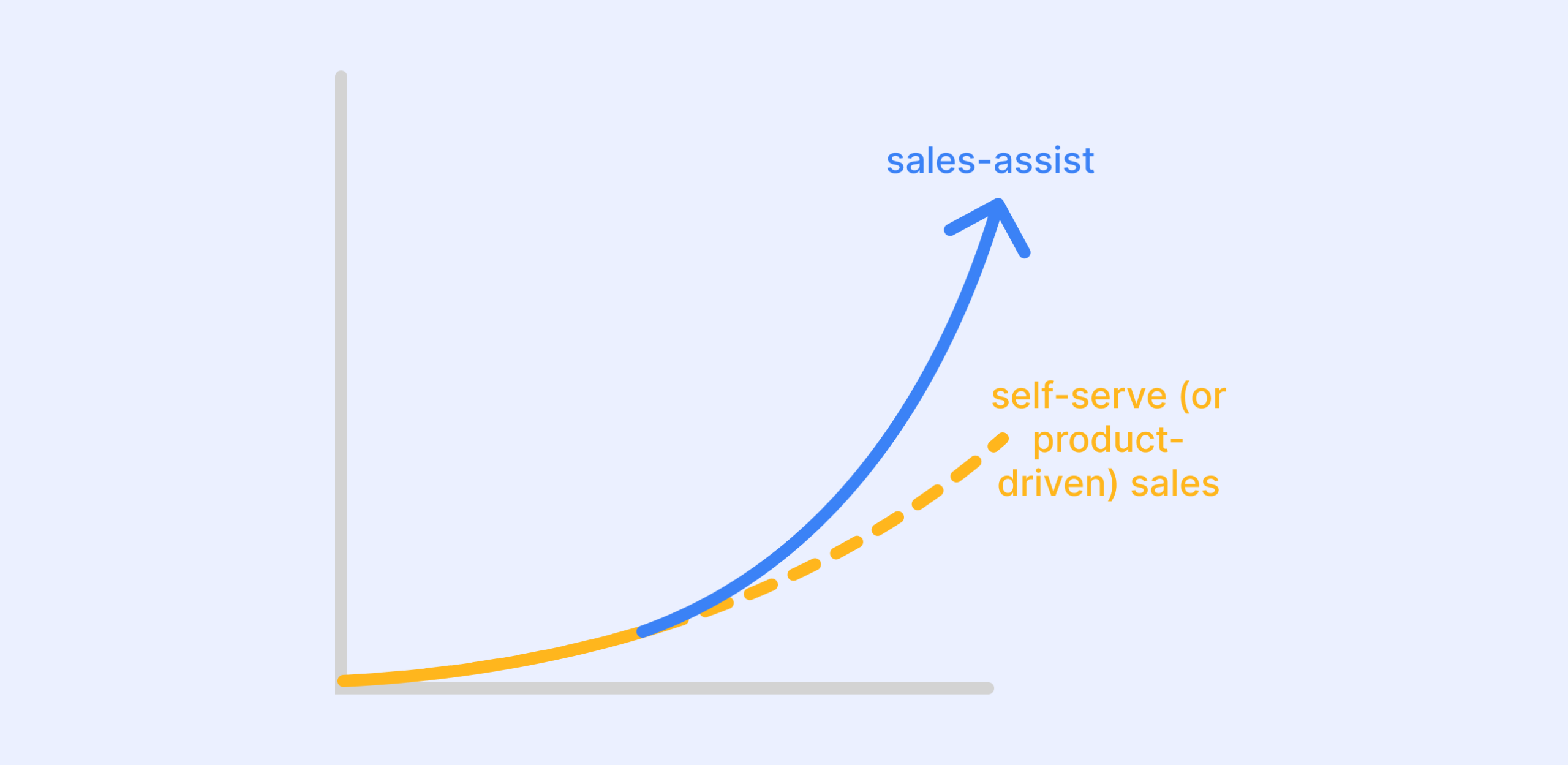SaaS sales is like a self-serve buffet. Product-led SaaS products create product experiences that sell themselves. Customers choose what they need without any push from a dedicated team of sellers and onboard themselves.
However, that only works with mid-market businesses. As you start selling to enterprises, the human touch becomes necessary. The sales-assist process helps customers with their immediate and particular needs. Combining automation with personal engagement, the sales-assist process helps customers in their purchasing journey.
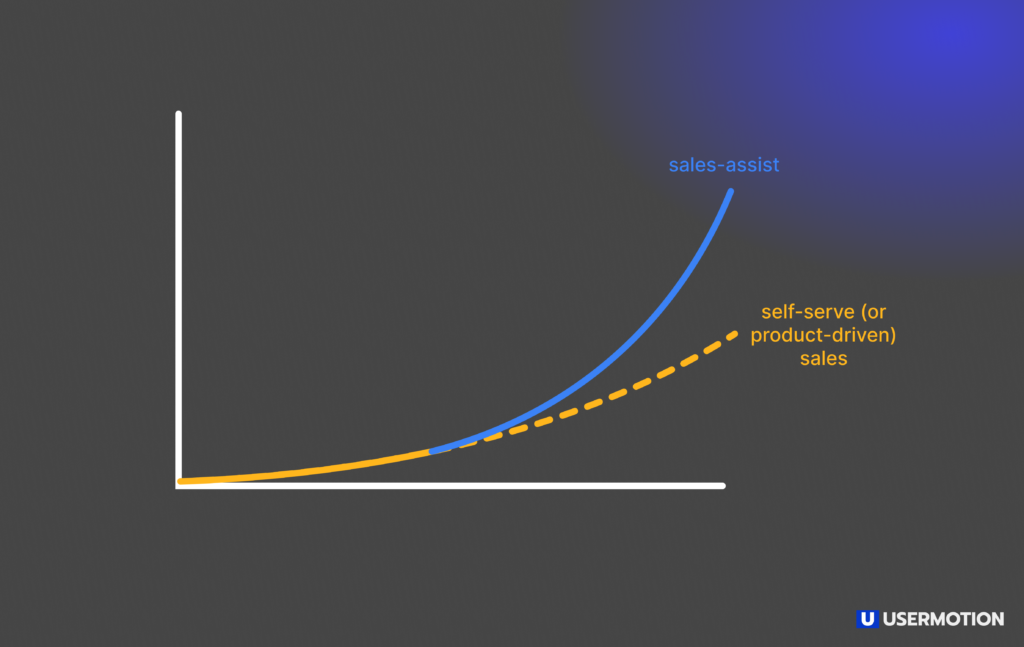
TL;DR
- The job of a sales-assist is to remove doubts, last-minute cold feet, and any kind of friction that comes during all stages of purchasing decisions.
- A sales-assist adds a human touchpoint to an automated PLG model.
- Some leads require assistance understanding the terms and conditions, clearing case-specific doubts, etc.
- Instead of measuring the growth in deals closed, the goal of a sales-assist is to maximize revenue through premium customer guidance, upselling, and service.
What is Sales-Assist?
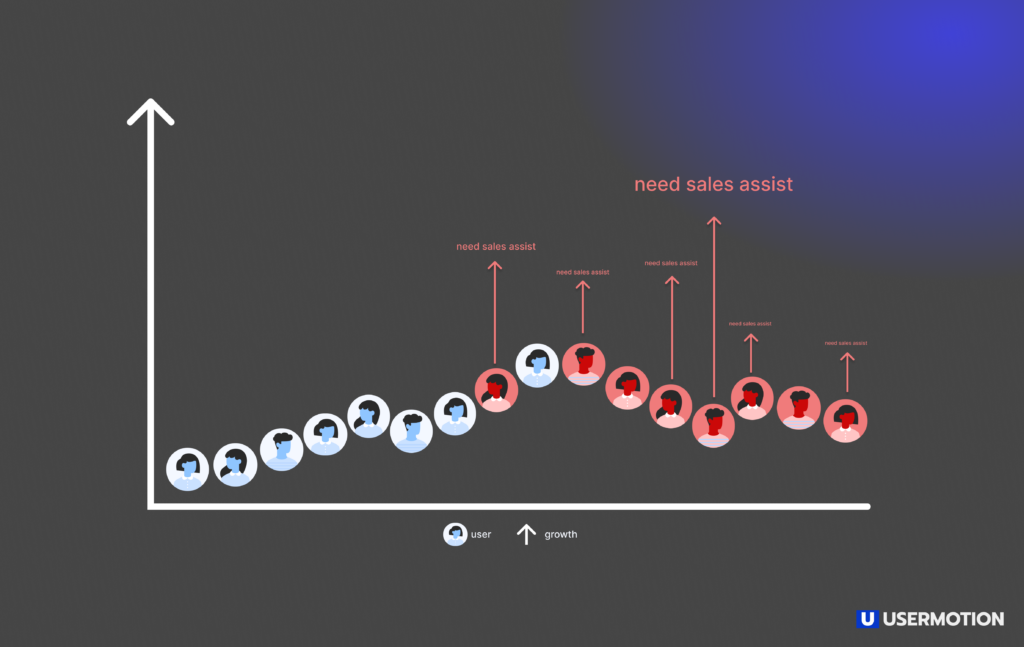
The role of sales-assist is all about supporting product-led sales. It aims to simplify the product understanding when needed and help users in their purchasing journey.
In product-led sales, the self-service experiences are on the front. Customers educate, onboard, and convert themselves.
Still, they might need assistance in understanding the full potential of your product.
This is exactly why a sales-assist is needed for PLS strategy.
The job of a sales-assist is to remove doubts and any kind of friction that comes during all stages of purchasing decisions for users who are identified as product-qualified leads.
This role primarily serves to lead on the edge of making a decision. However, it can also extend its support to first-time buyers, initial-stage converts, and leads originating from a new source.
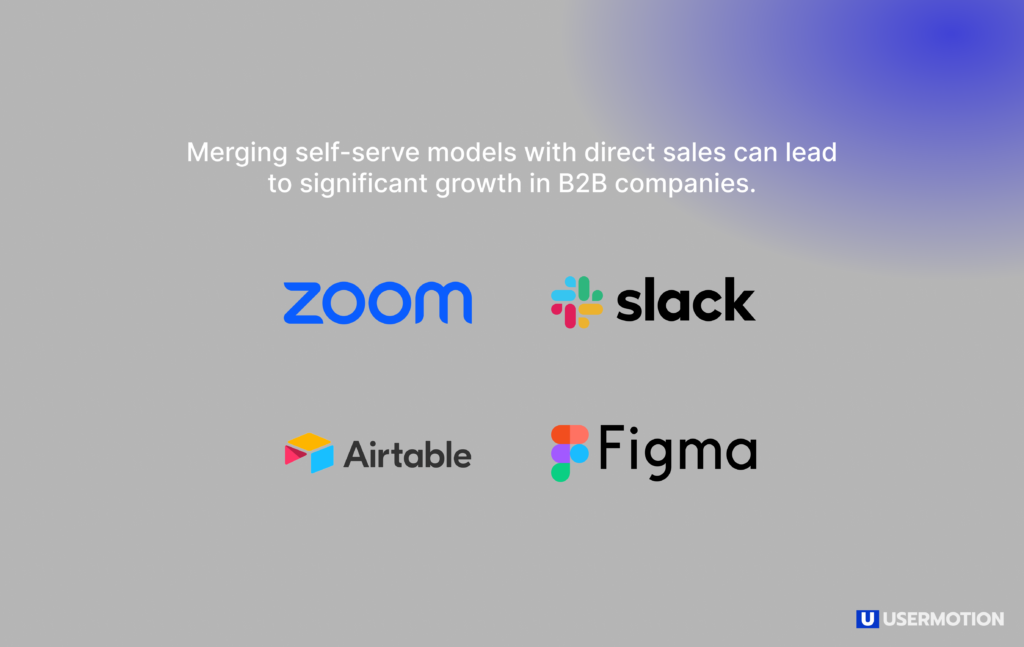
Instead of pitching the product or courting new leads, sales-assist sweeps in when needed to administer requests and clear doubts.
We can also explain the sales-assist role in three aspects for a clearer understanding:
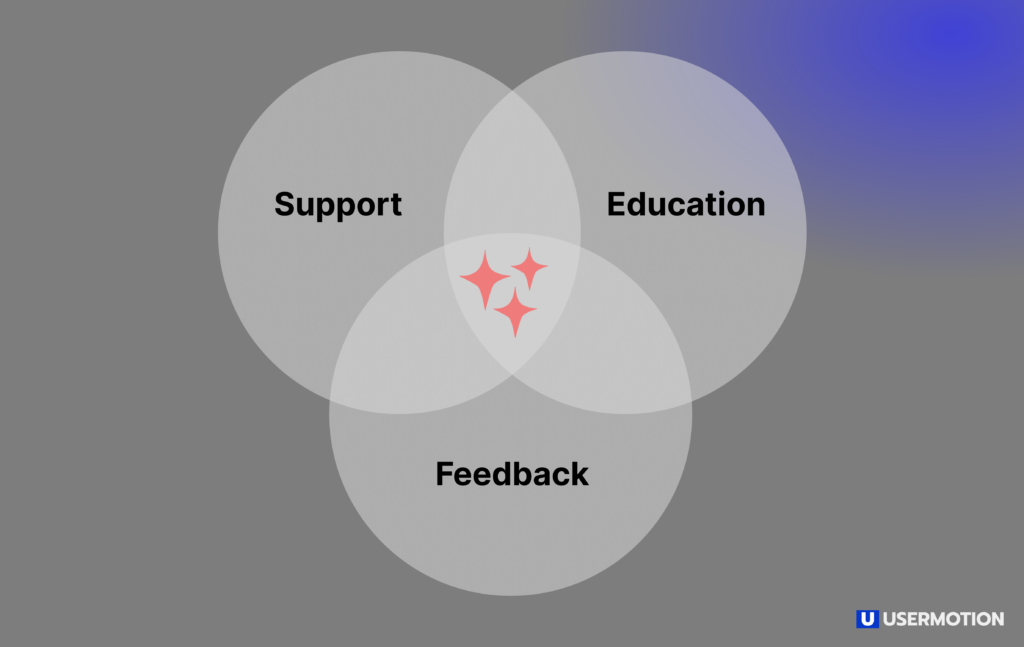
- Support: Support in sales is a bit different, and a bit more complex than standard customer success. The sales-assist role provides the necessary sales support to customers at any stage of their buying journey.
- Education: Product-led SaaS products are mostly self-explanatory in terms of features, capabilities, or functions. However, the sales-assist role provides more advanced education and enablement about the product and improves their engagement.
- Feedback: Sales assist also works as a bridge to pass on potential customers’ feedback to the necessary teams. An existing customer shares their feedback with a customer success or account manager. But, a potential customer mostly does not do that. That’s why a sales-assist role fills this gap.
What Does a Sales Assist Team Do?
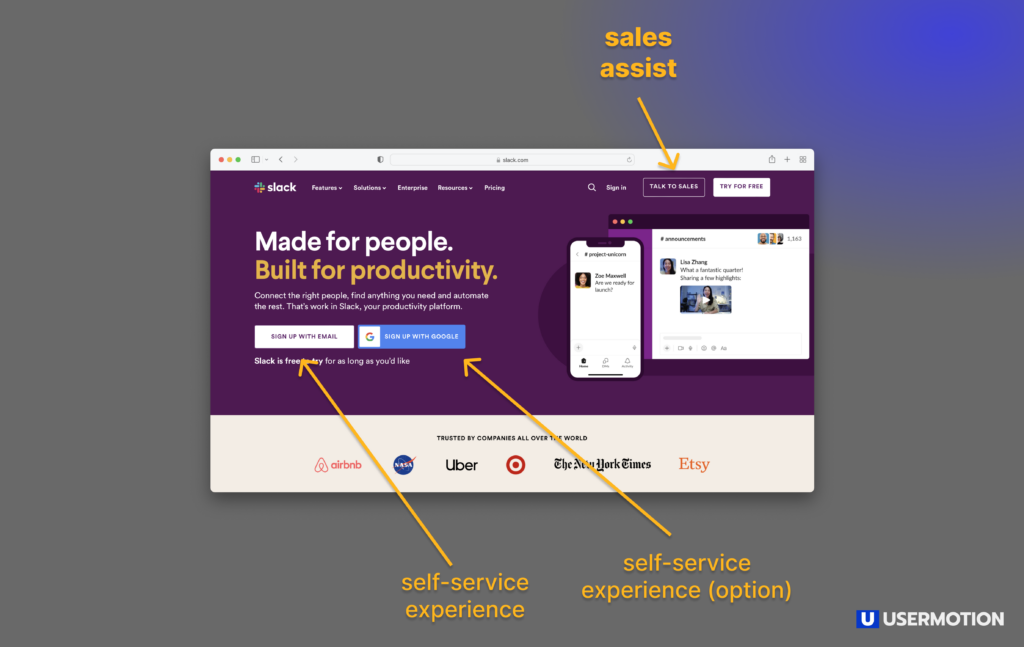
A “sales-assist” quite literally assists in sales.
In the product-led growth model championed by companies like Canva, Spotify, and others, the role of sales-assist serves product-qualified leads.
Despite the product selling itself, plenty goes into making a sale happen.
The journey from becoming a PLQ lead to a converted user is long-winded and filled with many forms, sign-ups, multi-level decision-making, and monetary transactions.
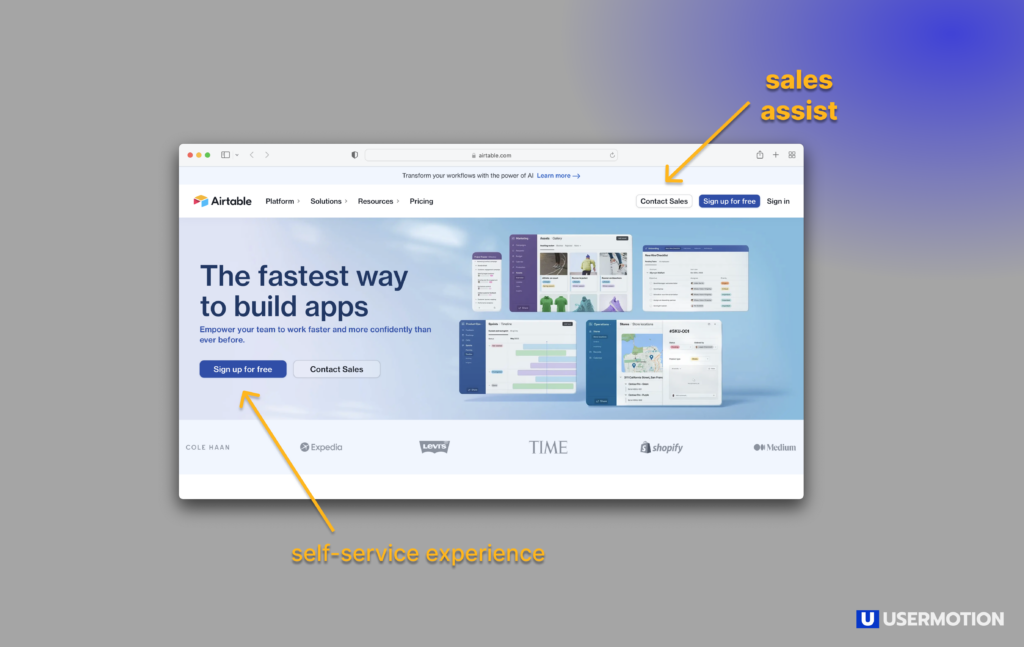
A sales assistant notices user pain in things like filling out security questionnaires, comprehending payment, and legal requirements like GDPR compliance.
A single point of inflection or hiccup can drive away the best of PLQs.
Apart from assisting customer queries, here are some primary job roles that sales-assist perform:
- Reactive Outreach to Hand-Raisers
A sales-assist team capitalizes on opportunities by courting hand-raisers, aka leads who have expressed outsized interest in sales.
- Addressing Conversion Rate Plateau
A sudden plateau in the conversion rates is an ominous sign that users are encountering obstacles in the self-serve process. Sales-assist professionals step in and provide personalized assistance, as they are well-versed with the pipeline.
- Enhancing Customer Experience
Sales-assist improves customer experience by offering guidance and support throughout the customer journey. This can lead to higher customer satisfaction, loyalty, and increased customer lifetime value.
- Pursuing Complex or Consultative Sales
Some products or paid tiers require a more consultative or complex sales approach. Accounts like these are best handled using salespeople, who can address their unique needs and offer personalized solutions.
When To Add a Sales-Assist Team?
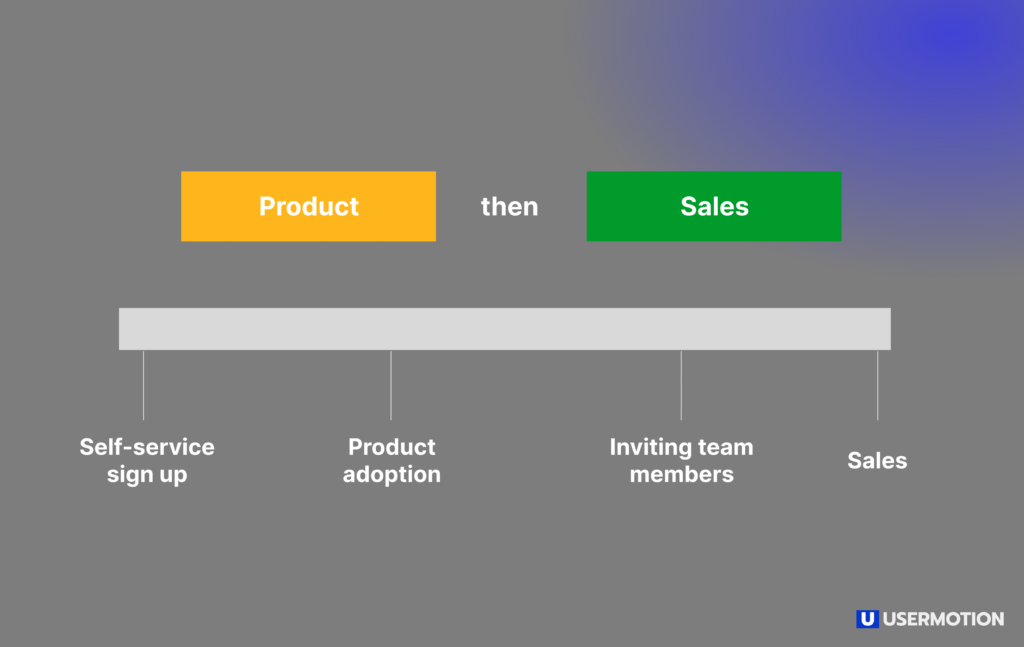
In product-led SaaS businesses, products handle most (all) of the onboarding and retention process. Yet, there might be customers, mostly larger customers, and enterprise companies but not limited to these, who ask for help. The sales assistant solves their problems. There can be primary two signals to understand when you should add a sales-assist team to your SaaS.
The first one is having many sales support requests, which shows that now a large amount of your customer profile needs clarification or guidance.
The second sign is that your product is growing too fast, and enhancing its functions, becoming more complex for some. This means that you need to remove friction for your users.
How To Measure Performance?
The key performance indicators (KPI) for a sales-assist role differ from those of an average sales rep or SDR.
Instead of measuring the growth in deals closed, the goal of a sales-assist is to maximize revenue through constant guidance, upselling, and premium customer service.
Instead of sticking to numbers, here are different ways to measure the KPIs for a sales-assist role. (Some other KPIs to measure the performance with product-qualified leads)
- Impact on ARR (Annual Recurring Revenue)
A smart and dynamic sales-assist team directly impacts the revenue through upselling, cross-selling, and customer retention and bolstered customer lifetime value.
- Feedback Loop
If you have a fantastic sales-assist who champions the product, your customers will let you know through their feedback. With tools like surveys, feedback forms, and direct interviews, you can gauge customer satisfaction and analyze sales-assist performance.
- Pipeline Efficiency
To keep tabs on sales-assist performance, you can analyze the conversion rates at different sales funnel stages for leads assisted by the sales-assist team. Higher conversion rates demonstrate the team’s ability to guide prospects effectively.
The Role Of Sales-Assist In Crisis
Software selling is unpredictable, to say the least.
Sudden market change, a spike in sales due to virality, and so many other things happen daily.
When things go south, sales-assist teams play a pivotal role by providing critical support to the sales department.
Sales assist specializes in maintaining customer relationships, adapting sales strategies, and ensuring the organization can navigate challenging times with resilience and agility.
By working collaboratively and strategically, sales-assist teams help mitigate the negative impacts of crises and position the company for long-term success.
Some of the ways they are of use in the time of crisis are:
- Addressing teams by maintaining open lines of communication with customers and addressing their concerns
- Drafting empathetic and informative messages that reassure customers and maintain relationships
- Monitoring market trends, competitor actions, and customer behavior to equip sales teams with up-to-date insights
- Gathering and analyzing customer data to identify new opportunities or shifts in customer preferences that may emerge during the crisis
- Working closely with sales leadership to adapt sales strategies to the evolving crisis environment
- Identifying product or service offerings that are most relevant and needed by customers during the crisis and assisting in pivoting sales efforts accordingly
When Does Your SaaS Need a Sales-Assist Team?
Not every B2B SaaS sales team needs a sales-assist role.
In fact, adding more labor instead of simplifying product usage and perfecting demos drifts you further away from the PLG utopia.
So, when should you onboard a sales-assist team? Here are a few cases:
- Multi-tiered Pricing and Packages
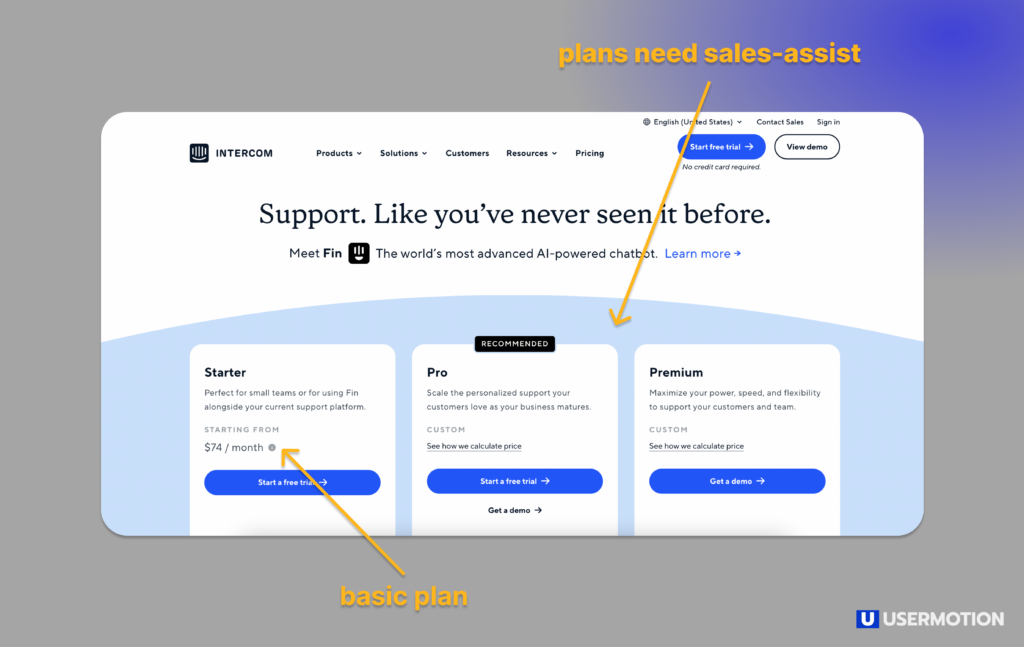
There’s a vast difference between buying a $6/month subscription and a $500/month subscription.
The latter has a different buying process, often including executive assessment and multiple decision-makers.
Despite fulfilling the best tenets of PLG, like intensive product demos and laid-out processes, it’s challenging to court upmarket customers making purchasing decisions on behalf of a company.
In cases like these, adding to an already fulfilling sales process won’t move the needle. Instead, the focus should be on adding sales assistants deployed to serve product-qualified leads.
- Complex Sales Process
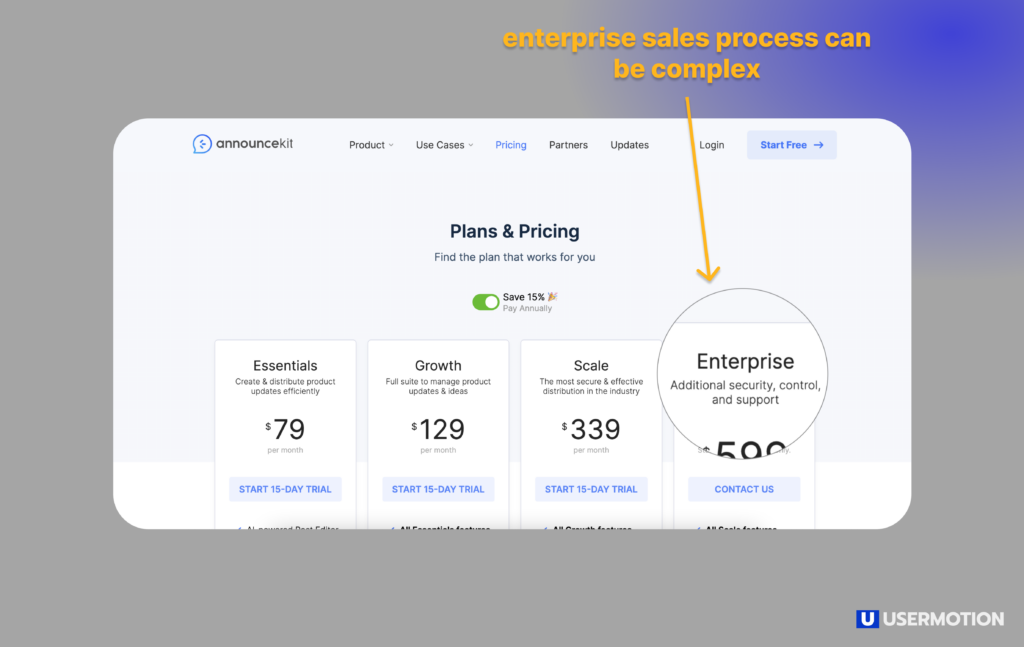
If your SaaS product has a complex sales process that includes intricate customization requirements, a sales-assist team can help navigate these complexities.
Most customers, especially enterprise customers, need personalized experiences, therefore personalized guidance that the software will fulfill their future needs.
A sales-assist team can paint the picture of product usage while squashing doubts and killing last-minute cold feet.
- Niche or Specialized Markets
If your SaaS product serves a niche or highly specialized market, it may require a sales-assist team with domain expertise.
They can speak the language of your target customers, understand their unique pain points, and provide tailored solutions.
- Upselling and Cross-Selling
Upselling and cross-selling is a great way to boost sales. A sales-assist team can capitalize on upselling and cross-selling opportunities if you offer complimentary services or products with individual check-outs.
Pro-tip: Check out our report on identifying your potential customers and maximizing your selling potential.
Hiring The Right Candidate for The Sales-Assist Role
Since sales-assist is a new and evolving role, there is no one-size-fits-all candidate profile that you can use to nail the sales-assist hire.
However, there are skills that come in handy in the role of a sales assist:
- Strong Communication Skills
Effective communication is a linchpin of the sales-assist role.
A sales-assist team should be proficient in conveying ideas clearly and concisely. They can’t be talkers alone; they must also be listeners who can empathize with users’ needs and gather valuable feedback. Their communication skills are pivotal in building trust and driving engagement.
- A Collaborative Working Attitude
Sales-assist must work to bridge the gap between different teams and functions and ensure that information flows smoothly across sales, marketing, and product departments.
Successful candidates must excel in cross-functional teamwork, foster a harmonious working environment, and ensure that everyone is aligned toward common goals.
- A Strong Talent for Data
Candidates for the sales-assist role should be analytical thinkers who can interpret data effectively and make data-driven decision-making.
They must have a quantitative proficiency that allows them to use data to identify trends, opportunities, and areas for improvement.
- Technical Proficiency
Being well-versed in technology is a much-needed skill stack that a sales-assist role must have.
They must be excited to explore the product’s technical details and demonstrate a commitment to understanding how it works.
- Open to Experimentation and New Things
The hires for the sales-assist role must be agile problem solvers who can swiftly test new ideas and adapt to evolving strategies.
They must thrive in fast-paced environments where they can bring innovation to the table, do A/B testing, and offer creative solutions to complex challenges.
Add A Human Touchpoint To Product-led Sales with a Sales-Assist Role
A sales-assist team distinguishes itself from CRMs, chatbots, and automated mechanics by offering a vital human touchpoint to confused users.
In the product-led sales era, the conventional, rigid sales team hierarchy has evolved into dynamic clusters, each assigned specific roles to enhance conversion rates.
Among these roles, the sales assistant role stands out.
The question is: Does your B2B SaaS need a sales-assist team?
Check out our Customer Health Score Guide in SaaS to assess your current customer acquisition status and make an informed decision.
What does a SaaS salesperson do?
A SaaS salesperson helps to sell software products to customers. In product-led sales, a sales-assist role emerges to support users throughout their purchase journey, removing doubts and friction that arise during the purchasing decisions, especially for product-qualified leads.
What is sales assist?
Sales assistance is about supporting product-led sales. It simplifies the product understanding when needed and aids users in their purchase journey. While customers in product-led sales often educate and onboard themselves, there are times they might need assistance to understand the product’s full potential. The sales-assist role steps in to alleviate these challenges.
What is a SaaS sales strategy?
SaaS sales strategy in a product-led environment primarily focuses on creating product experiences that sell themselves, allowing customers to choose and onboard without any push. However, as businesses scale towards enterprises, the human touch becomes essential, and that’s where sales-assist comes into play.

